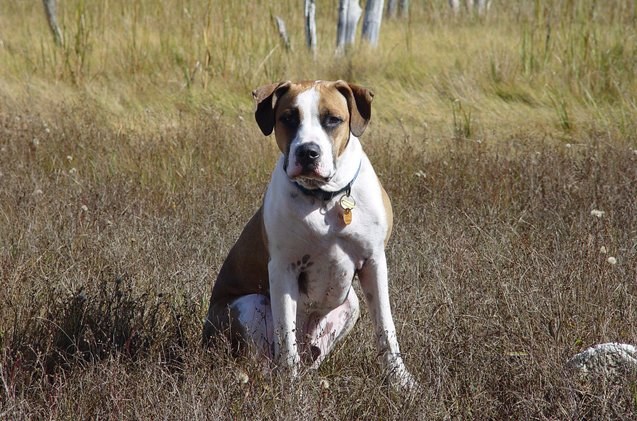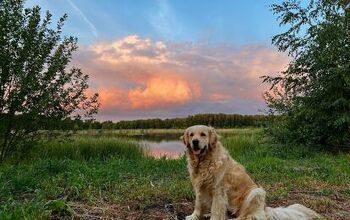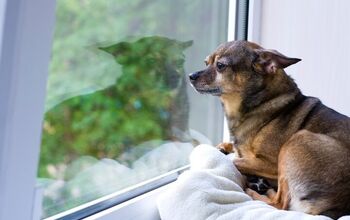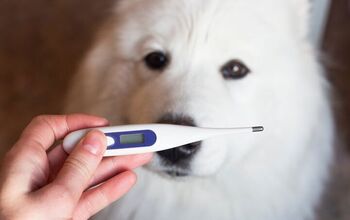Bullador


About Bullador
The Bullador blends the gentle personality of the Labrador Retriever with the sweet-natured stamina of the Bulldog to produce a playful, loving family dog who does well with kids and when trained properly, other dogs and pets. This medium- to large-sized pooch has an energetic personality that makes him a great running or jogging companion and a protective side that can be brought out and trained to make him a perfect, non-aggressive watchdog.
The Bullador is a mix of Labrador Retriever and Bulldog.
The Bullador is a relatively new breed that joins the growing list of designer dogs incorporating Labrador retriever DNA in pursuit of a pooch with a friendly, easy-going personality. While the English Bulldog is similarly loving and social, he also brings an endearing sense of stamina and stubbornness to the mix, making him a fun companion. Both dogs come from a working background with some pretty impressive lineage; the Labrador retriever hails from 19th century Newfoundland where he was used by fishermen to haul nets, ropes and pull in fish. The English Bulldog is descended from mastiff dogs and was originally bred in England back in the 1500s for use in bull baiting. By the 1800s when the sport was stopped, his wonderful character was recognized by breeders who ultimately turned him into a more suitable companion dog
Because of the mix of Bulldog and Labrador retriever, the Bullador is considered a designer dog and is restricted from joining the coveted American Kennel Club roster of purebreds. That said, his parents are members in good standing; the Bulldog joined the AKC’s “non-sporting” group back in 1886 and is described as calm, courageous and friendly. The Labrador retriever dates back to 1917, when he joined AKC’s “sporting” group and is currently touted as friendly, active and outgoing.
The Bullador is a medium- to large-sized dog that will consume up to 3 – 4 cups of dry food daily. Kibble size should be large (to avoid gobbling) and should be geared specifically to his age and activity level. Both the Labrador retriever and Bulldog are known to overeat whenever the opportunity presents so don’t plan to free-feed your dog; split his food between two meals each day and always choose food that lists “meat” as a first ingredient versus fillers (such as carbohydrates and grains) that will make him want to keep eating to feel full. As both the Labrador retriever and Bulldog are prone to hip dysplasia and joint issues, foods that include glucosamine are a good option. Because Bulldogs can suffer from bloat, don’t plan to exercise your Bullador immediately after feeding.
The Bullador is a playful, loving family dog who does well with kids and when trained properly, other dogs and pets.
The Bullador is a mixed bag when it comes to training. His Labrador retriever DNA makes him bright and easy to train while the Bulldog side delivers a pooch that is not quick to pick-up on commands and can be stubborn. Patience will be needed as you discover on which side of the gene pool your Bullador lands! For owners not seasoned at training a head-strong pooch, a professional dog trainer would be a good investment. Regardless of which route you take, early socialization is important – particularly as it relates to other animals – and as with all dog breeds, a positive, rewards-based approach to his obedience and socialization training is best. Firm, consistent instructions accompanied by lots of praise and your choice of reward will result in a quicker, more successful training process.
The Bullador is considered a medium sized breed and when fully grown, he will weight 50-90 pounds.
The Bullador is described as loving, loyal, protective and energetic, making him a great family pet who loves to play – indoors or out. While he has a strong sense of loyalty, he is not considered clingy, so can be left for short periods of time without fear of barking or destructive behaviors. The Bulldog side of his DNA can make him territorial with strangers and other animals and while this can be minimized through training, the instinct makes him an ideal candidate for watchdog duty. The Lab side delivers a friendly, social dog who is patient with other pets and children. Between the two breeds, the resultant Bullador is a gentle, funny and clever dog who is a devoted family member and loyal to his human pack in a non-aggressive manner.
Designer dogs don’t necessarily experience the same health issues that may plague their purebred parents. In fact, many breeds are crossed in a bid to cancel out some of the more problematic genes and the hybrid outcome ends up being more physically sound than their parents. That said, prospective owners of a Bullador should always research health concerns that may be passed down to their dog. For both Labrador retrievers and Bulldogs, hip and elbow dysplasia are a common problem as is obesity. Bulldogs can also be prone to gastro-torsion (bloat) can be a problem. Because the Bullador inherits a modified version of the facial features typical of a Bulldog, he does not experience the brachycephalic (breathing) issues typical of the breed nor the skin problems associated with the heavy facial folds.
The Bullador has a life expectancy of 10 to 12 years. Their lifespan is somewhat shorter than average for breeds.
Because the Bullador comes from two breeds that can be prone to joint and dysplasia issues, he will require regular, consistent exercise to keep him at his ideal weight. This shouldn’t be a problem for the high-energy Bullador who will love nothing more than to accompany his owner on long hikes, walks and runs, an off-leash park or just to chase a ball in his own backyard. Lack of exercise in any dog can result in boredom, depression and destructive behaviors so plan to devote at least one hour each day to giving your Bullador an energetic workout.
The Bullador is described as loving, loyal, protective and energetic.
Designer dog status means the Bullador is not recognized by the American Kennel Club, he is a member of the Dog Registry of America, Inc. (DRA), American Canine Hybrid Club (ACHC) and the International Designer Canine Registry (IDCR)
Bulladors physically resemble a Labrador retriever in height and build with a short, dense water-proof double-coat that is typically black, brown, red, yellow or tan. He is a considered a light-shedding dog that shifts to moderate-shedding during Spring and Fall. Professional grooming is not necessary however regular brushing (daily when shedding) will help keep his coat looking its best and the loose hair in check. Because this breed has floppy ears, infections can occur so ears should be checked and cleaned regularly to avoid a buildup of wax and debris.
Bullador pups should begin socialization and obedience training as soon as possible. Because of this breed’s propensity to joint and bone issues, owners should avoid the urge to over-exercise him in order to tire him out. Watch and respond to his body language to avoid injury that will plague him later in life. Even as a puppy, this pooch will want to eat all day long so food should be provided over several meal-periods, versus left in the open, and plenty of chew toys will help quell his need to gnaw on everything in sight.
Photo credit: Chas53/Bigstock; Mindseye11/Bigstock; mjordan/Bigstock

Sharing space with three seriously judgy Schnoodles and a feline who prefers to be left alone. #LivingMyBestLife
More by Mary Simpson

























